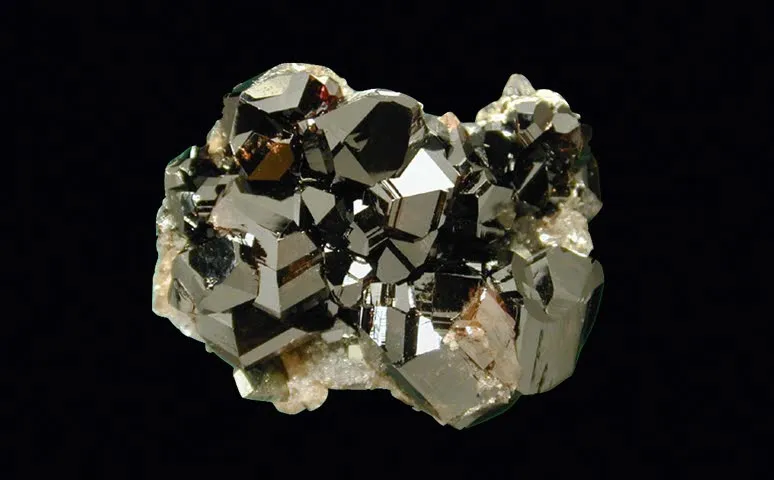
Importers, smelters and refiners, you are concerned!
This regulation concerns you and will impact your activity, if:
- you are an importer of these minerals or metals
- you smelt or refine them
- you have a management system for your supply chain that is not compliant with the new regulation
- you do not have a management system for your supply chain
This regulation does not apply:
- if you import under a certain amount
- to metals recycled or created prior to 1er February 2013
The European regulation focuses on conflict-affected and high-risk areas. These areas regroup:
- areas in a state of armed conflict
- fragile post-conflict areas
- areas witnessing weak or non-existent governance and security
- failed states, and widespread and systematic violations of international law, including human rights abuses.
Note : the scope of this regulation is larger than its US equivalent (article 1502 of the Dodd-Frank law). These areas will mainly concern West Africa, Central Africa and some areas in East Asia and South America.
How to comply when you are a minerals importer?
The regulation concerns 600 to 1,000 European importers.
Companies will be concerned depending on the amount of imported minerals or metals as established in Annex I of the regulation. For example, Gold, unwrought or in semi-manufactured forms imported in volumes of 100 kg is concerned whereas Tin ores and concentrates are concerned in volumes of 5 tonnes.
To comply with the regulation, a 5-step approach is described in "Due Diligence Guidance for Responsible Supply Chains from Conflict-Affected and High-Risk Areas".
These steps are summarised below:
n�StepCorresponding article in the regulation1Establish a management system42Identify and assess risks in the supply chain53Build and implement a strategy for the risks identified54Conduct a third-party audit independent from the supply chain management system65an annual basis, publicly report on the supply chain management system7
The European regulation requires importers to meet the recommendations concerning supply chain management from the OECD guidance, including annex 2.
For smelters and refiners: a list of approved suppliers
The regulation indirectly impacts gold, tin, tantalum and tungsten smelters and refiners whether from the EU or outside. This is due to the fact that European importers will have to be certain they get their supply from a responsible smelter or refiner.
The European Commission will publish a list with all smelters and refiners meeting the requirements of the regulation and which have had their supply chain management systems validated by the Commission.
Do you already have a supply chain management system?
If you already have a supply chain management system, you can ask the European Commission to validate your system as being equivalent to the requirements of the 5-step approach described earlier.
A compliance process to start asap!
We recommend you start thinking about it now. You will have to implement a supply chain management system before 1st January 2021 to anticipate the constraints of the regulation for importers dealing with non-compliant smelters.
Economic as well as time-consuming constraints such as additional external consultations and audits will also have to be taken into account in the compliance process. This often requires a structural transformation in the minerals supply chain management system.
The Commission plans to create guides to help with compliance
Before the end of 2017, the European Commission will publish a guide to help identify these areas. They will mainly concern West Africa, Central Africa and some areas in East Asia and South America. This European regulation is therefore more extensive than the US law on conflict minerals (Conflict Minerals Act).
The Commission will also ask external experts to draw up a list of the risk areas. This list will be indicative and non-exhaustive. It will be regularly updated.
You wish to learn more on substance traceability?
For more information on REACH registration, do not hesitate to contact our expert expert Fang Zhou on +33 1 83 64 20 54 (Europe) or on +1 778 231 1607 (North America). You can also send an email to contact@ecomundo.eu
Importers, smelters and refiners, you are concerned!
This regulation concerns you and will impact your activity, if:
- you are an importer of these minerals or metals
- you smelt or refine them
- you have a management system for your supply chain that is not compliant with the new regulation
- you do not have a management system for your supply chain
This regulation does not apply:
- if you import under a certain amount
- to metals recycled or created prior to 1er February 2013
The European regulation focuses on conflict-affected and high-risk areas. These areas regroup:
- areas in a state of armed conflict
- fragile post-conflict areas
- areas witnessing weak or non-existent governance and security
- failed states, and widespread and systematic violations of international law, including human rights abuses.
Note : the scope of this regulation is larger than its US equivalent (article 1502 of the Dodd-Frank law). These areas will mainly concern West Africa, Central Africa and some areas in East Asia and South America.
How to comply when you are a minerals importer?
The regulation concerns 600 to 1,000 European importers.
Companies will be concerned depending on the amount of imported minerals or metals as established in Annex I of the regulation. For example, Gold, unwrought or in semi-manufactured forms imported in volumes of 100 kg is concerned whereas Tin ores and concentrates are concerned in volumes of 5 tonnes.
To comply with the regulation, a 5-step approach is described in "Due Diligence Guidance for Responsible Supply Chains from Conflict-Affected and High-Risk Areas".
These steps are summarised below:
n�StepCorresponding article in the regulation1Establish a management system42Identify and assess risks in the supply chain53Build and implement a strategy for the risks identified54Conduct a third-party audit independent from the supply chain management system65an annual basis, publicly report on the supply chain management system7
The European regulation requires importers to meet the recommendations concerning supply chain management from the OECD guidance, including annex 2.
For smelters and refiners: a list of approved suppliers
The regulation indirectly impacts gold, tin, tantalum and tungsten smelters and refiners whether from the EU or outside. This is due to the fact that European importers will have to be certain they get their supply from a responsible smelter or refiner.
The European Commission will publish a list with all smelters and refiners meeting the requirements of the regulation and which have had their supply chain management systems validated by the Commission.
Do you already have a supply chain management system?
If you already have a supply chain management system, you can ask the European Commission to validate your system as being equivalent to the requirements of the 5-step approach described earlier.
A compliance process to start asap!
We recommend you start thinking about it now. You will have to implement a supply chain management system before 1st January 2021 to anticipate the constraints of the regulation for importers dealing with non-compliant smelters.
Economic as well as time-consuming constraints such as additional external consultations and audits will also have to be taken into account in the compliance process. This often requires a structural transformation in the minerals supply chain management system.
The Commission plans to create guides to help with compliance
Before the end of 2017, the European Commission will publish a guide to help identify these areas. They will mainly concern West Africa, Central Africa and some areas in East Asia and South America. This European regulation is therefore more extensive than the US law on conflict minerals (Conflict Minerals Act).
The Commission will also ask external experts to draw up a list of the risk areas. This list will be indicative and non-exhaustive. It will be regularly updated.
You wish to learn more on substance traceability?
For more information on REACH registration, do not hesitate to contact our expert expert Fang Zhou on +33 1 83 64 20 54 (Europe) or on +1 778 231 1607 (North America). You can also send an email to contact@ecomundo.eu







